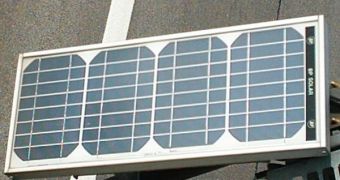In addition to the traditional “approaches” to stopping global warming and climate change, such as reducing greenhouse gas emissions and installing clean technologies at power plants, scientists also ponder larger schemes, at a planetary scale. Among them, sprinkling the world's oceans with iron particles, so as to boost the mass of plankton in them, is one of the most favored. Another one, however, seeks to inject other types of particles directly into the atmosphere, so as to reduce the amount of sunlight that reaches the surface of the planet.
But this plan, even though it's receiving an increased number of proponents, seems more and more condemned to fail, experts say, on account of the fact that it will take away from one of the most important resources in the world today – the sun. In a few decades, oil and natural gases will completely disappear, so the only source of electricity would come from biofuels, geothermal vents, winds and the sunlight. But, with the injection of cooling and reflective particles in the air, the light would be scattered and thus lose its focus.
And while this is nothing but good news for the planet in terms of reducing global warming, it also means that solar power plants would register a very sharp decrease in production, which would further make fossil fuel lobbyists increase their efforts for oil and coal. Already, the discrepancies that these renewable power plants record between daily productions are a cause of concern, but if the output decreases constantly, as in if there is less light hitting the solar cells, then critics might very well win.
The current idea of a geoengineering scheme has come to scientists after noticing the effects that volcanic eruptions have on the mean temperatures within a year. They have seen that large amounts of ash spilled into the atmosphere indeed increase those of the recorded greenhouse gases, but at the same time lower temperatures throughout the world, if the eruption is strong enough. When Mount Pinatubo erupted in the Philippines in 1991, global temperatures decreased by 1 degree Celsius for the next two years.
The downside was that the production of the largest solar power plant in the world, the Solar Electric Generating Stations in California, fell by more than 20 percent over those two years. And that's a pretty drastic drop. Now, experts are seeking to duplicate the results of Mount Pinatubo in the long run, but without actually using ash or other carbon compounds in the process. Engineers believe that sulfur particles may be the best alternative to this injection process, and that this chemical has the potential to offset other gases in the atmosphere, such as carbon dioxide and methane.

 14 DAY TRIAL //
14 DAY TRIAL //